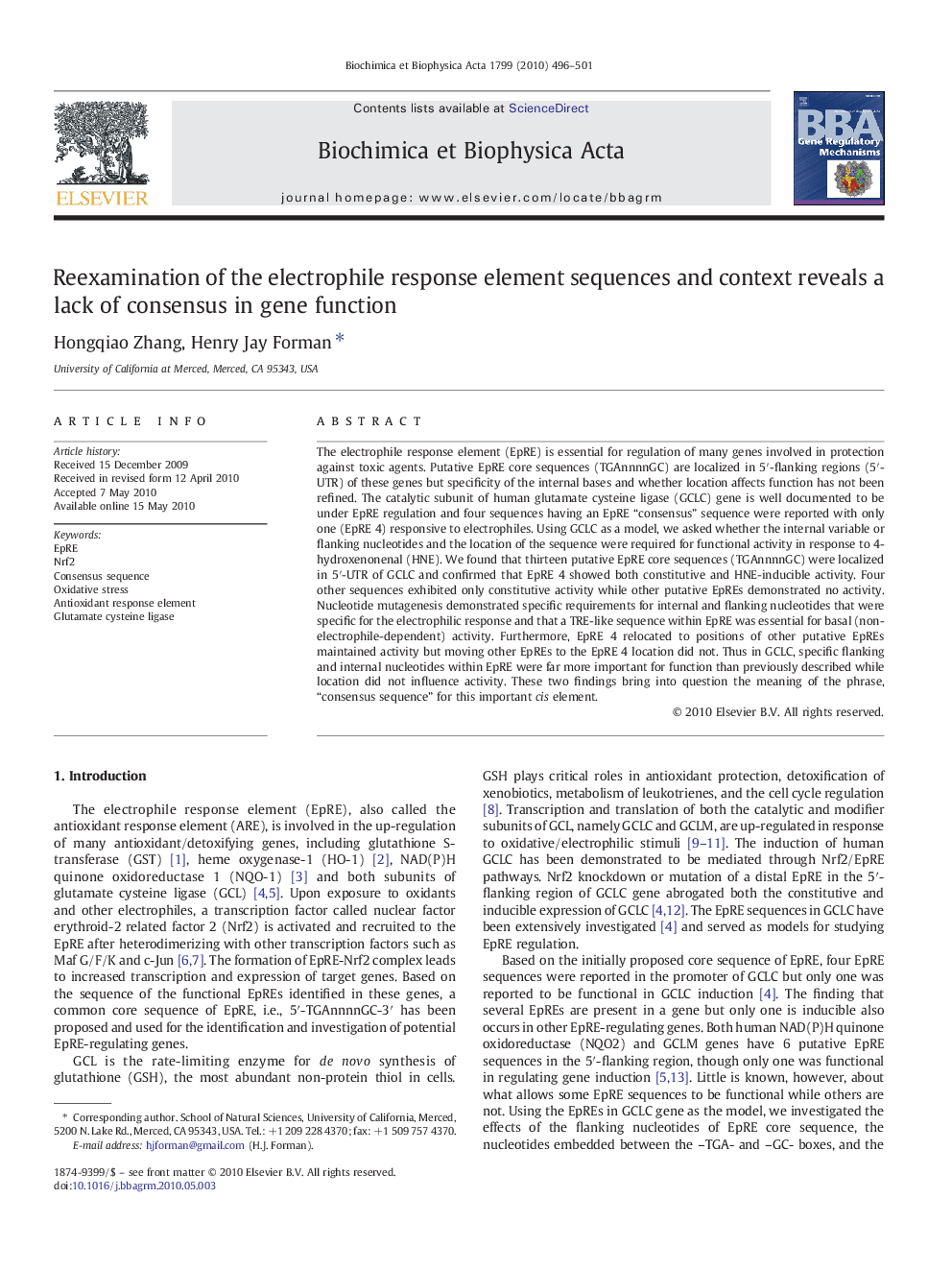| Article ID | Journal | Published Year | Pages | File Type |
|---|---|---|---|---|
| 1946795 | Biochimica et Biophysica Acta (BBA) - Gene Regulatory Mechanisms | 2010 | 6 Pages |
The electrophile response element (EpRE) is essential for regulation of many genes involved in protection against toxic agents. Putative EpRE core sequences (TGAnnnnGC) are localized in 5′-flanking regions (5′-UTR) of these genes but specificity of the internal bases and whether location affects function has not been refined. The catalytic subunit of human glutamate cysteine ligase (GCLC) gene is well documented to be under EpRE regulation and four sequences having an EpRE “consensus” sequence were reported with only one (EpRE 4) responsive to electrophiles. Using GCLC as a model, we asked whether the internal variable or flanking nucleotides and the location of the sequence were required for functional activity in response to 4-hydroxenonenal (HNE). We found that thirteen putative EpRE core sequences (TGAnnnnGC) were localized in 5′-UTR of GCLC and confirmed that EpRE 4 showed both constitutive and HNE-inducible activity. Four other sequences exhibited only constitutive activity while other putative EpREs demonstrated no activity. Nucleotide mutagenesis demonstrated specific requirements for internal and flanking nucleotides that were specific for the electrophilic response and that a TRE-like sequence within EpRE was essential for basal (non-electrophile-dependent) activity. Furthermore, EpRE 4 relocated to positions of other putative EpREs maintained activity but moving other EpREs to the EpRE 4 location did not. Thus in GCLC, specific flanking and internal nucleotides within EpRE were far more important for function than previously described while location did not influence activity. These two findings bring into question the meaning of the phrase, “consensus sequence” for this important cis element.
